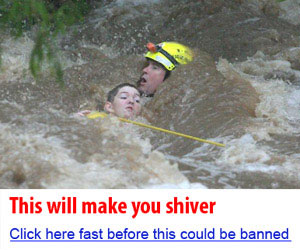Survival Lessons Learned from Flash Flooding: Essential Preparedness for You and Your Loved Ones
Survival Lessons Learned from Flash Flooding: Essential Preparedness for You and Your Loved Ones
Flash flooding is a sudden, dangerous event that can strike with little to no warning, leaving communities devastated in its wake. While it may seem like a rare occurrence, flash flooding can happen anywhere, triggered by severe weather, hurricanes, or dam breaks. In this article, we will discuss survival lessons learned from flash flooding and provide practical tips to help you prepare for the unexpected. From having cash on hand to ensuring your family is equipped with life vests, we’ll cover all the essentials to keep you and your loved ones safe.
The Importance of Cash on Hand
In the aftermath of a natural disaster like flash flooding, electronic payment systems are often down due to power outages or infrastructure damage. ATMs may be offline, and banks could be closed. For this reason, having cash on hand is crucial. We recommend keeping small denominations of bills in a secure, waterproof container that you can easily access. This cash can be used for essentials like food, water, fuel, or emergency supplies when digital transactions are impossible.
Tips for Storing Cash Safely:
Divide cash between different locations (home, vehicle, emergency kits).
Use waterproof bags or containers to protect against water damage.
Keep enough to cover at least a week’s worth of essential purchases.
Water: Your Most Critical Resource
When it comes to survival, water is your most important resource. In the event of a flash flood, access to clean drinking water may be limited. Floodwaters can contaminate public water supplies, making them unsafe to drink. It is recommended to have at least one gallon of water per person per day for at least three days, though having more is ideal.
How to Prepare Water for Emergencies:
Store bottled water in a cool, dark place.
Consider purchasing water purification tablets or a filtration system.
Collect rainwater if possible, but ensure it’s properly filtered before use.
Rotate stored water every six months to ensure freshness.
Life Vests: A Lifesaving Investment
Flash floods often lead to sudden, deep waters that can be fast-moving and difficult to escape. Life vests are a simple yet effective way to protect yourself and your loved ones in the event of rising water levels. Having a properly fitted life vest for each member of your family can make a significant difference in your ability to stay afloat and avoid injury or drowning.
Choosing the Right Life Vest:
Ensure the vest is U.S. Coast Guard approved.
Get vests that are size-appropriate for each person, including infants.
Keep vests easily accessible in your home and vehicles.
Regularly inspect life vests for wear and tear.
A Gas-Powered Vehicle: Your Best Bet for Evacuation
During natural disasters, especially floods, electric vehicles may be unreliable due to power outages and limited charging stations. For this reason, owning a gas-powered vehicle with a full tank of fuel can be a lifesaver. Gasoline-powered cars can travel longer distances without needing to stop for fuel as frequently, and they are more widely supported by traditional infrastructure.
Gas Vehicle Emergency Preparedness:
Keep the gas tank at least half full at all times.
Store extra gasoline in approved fuel containers for emergencies.
Plan your evacuation route in advance, considering the possibility of flooded roads.
Pack emergency kits, including a first aid kit, blankets, and non-perishable food, in your vehicle.
Means to Protect Yourself and Loved Ones
In times of crisis, such as during or after a flash flood, security becomes a significant concern. Law enforcement and emergency services may be overwhelmed, leaving you and your family to fend for yourselves temporarily. It’s essential to have a means of protection that ensures your safety from both environmental threats and potential human dangers.
Protection Strategies:
Consider self-defense training to equip yourself with necessary skills.
Secure personal protective tools, such as pepper spray, stun guns, or legally owned firearms, if appropriate for your situation.
Ensure you have reliable communication devices, such as battery-operated radios or cell phones with extra chargers, to call for help.
Be aware of your surroundings and avoid dangerous areas where looting or violence may occur.
Building an Emergency Kit
A well-prepared emergency kit is vital for surviving any disaster, including flash floods. Your kit should include essential items that will help you survive for at least 72 hours without external assistance. In addition to food, water, and first aid supplies, it’s important to pack items tailored to the specific risks of flash floods.
Emergency Kit Essentials:
Flashlights and extra batteries.
A multi-tool or Swiss Army knife.
Waterproof clothing and blankets.
Medications and medical supplies.
Extra cell phone chargers and backup batteries.
Copies of important documents (IDs, insurance papers) in a waterproof bag.
Stay Informed: Monitor Weather Alerts
One of the most important lessons in flood preparedness is staying informed. Weather alerts from trusted sources can provide the crucial minutes or hours you need to evacuate safely. Make sure your devices are set to receive emergency alerts, and always follow the instructions of local authorities.
How to Stay Alert:
Download weather alert apps and keep them active on your phone.
Use a battery-operated weather radio to receive updates even during power outages.
Set up alerts from the National Weather Service or local emergency services.
Know the flood risk in your area and be ready to act immediately when warnings are issued.
Evacuation Plan: Your Family’s Safety Strategy
If a flash flood warning is issued, evacuating promptly could be the difference between life and death. Evacuation plans are essential, and each family member should be familiar with what to do during an emergency. Consider the needs of your pets and any special circumstances, such as disabilities, that may affect your evacuation strategy.
Steps to Creating an Effective Evacuation Plan:
Designate meeting points in case family members are separated.
Keep important emergency phone numbers written down and easily accessible.
Practice your evacuation plan regularly, including quick grab-and-go drills.
Have multiple routes planned in case your primary escape route is blocked.
Conclusion: Preparedness Is Key
Surviving a flash flood depends heavily on preparation and quick action. By having cash on hand, storing enough water, equipping your family with life vests, driving a gas-powered vehicle, and preparing for potential security threats, you can significantly improve your chances of staying safe. Every minute counts in an emergency, so take the time now to get ready before disaster strikes.


